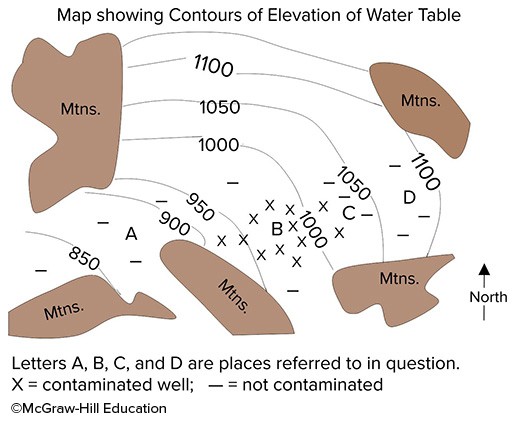Energy return on investment (EROI) is a method for evaluating the feasibility of developing an energy source. (The amount of energy produced by the source must be larger than the amount of energy used to obtain and use the source.) Which one of the following is typical for the EROI for a source?
A. New fossil fuel sources generally have a lower EROI than older ones.
B. Hydroelectricity has a low EROI.
C. Ethanol from corn or sugar cane has a high EROI.
D. Most renewable sources have a higher EROI than fossil fuel sources.
Answer: A
You might also like to view...
Komatiites are common from the Archean eon, although none are produced in modern tectonic environments
a. True b. False
Scientists in the early 20th century immediately accepted the idea of continental drift.
Answer the following statement true (T) or false (F)
This map shows contours of the water table, the location of four factories (labeled A, B, C, and D), and contaminated (x) and uncontaminated wells (-). Which factory contaminated the groundwater?
A. factory A B. factory B C. factory C D. factory D
What is the process behind tidal energy?
A. electricity generated by the rise and fall of tides B. waves rushing back and forth as a result of tides C. the back and forth movement of the daily tidal cycle D. the difference between high and low tides